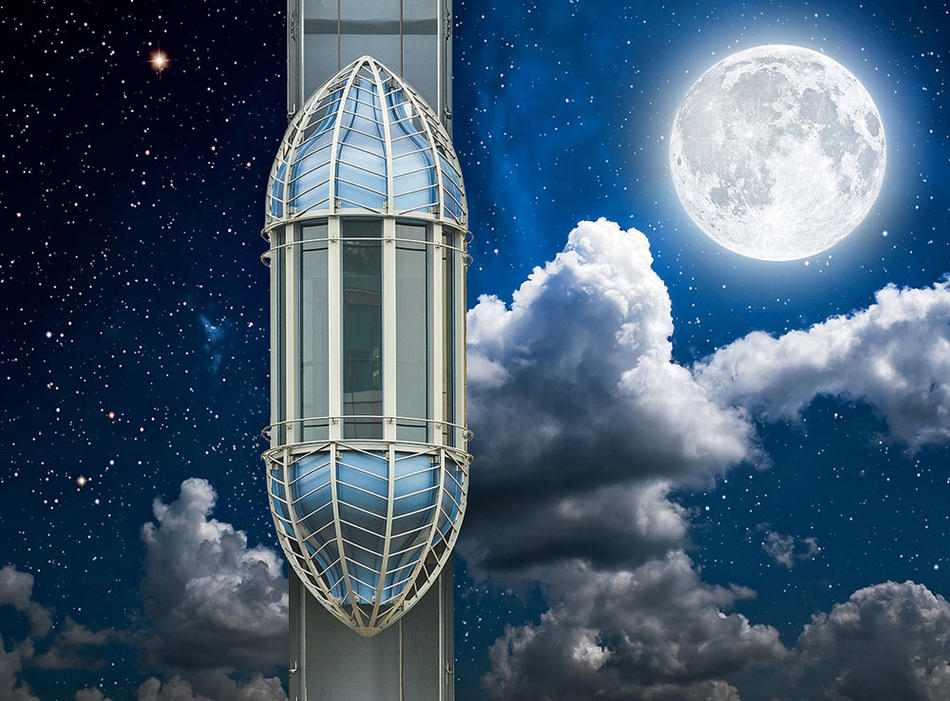Long before rocket ships were invented, stargazers dreamed of building a tower to the heavens. In 1895, the Russian scientist Konstantin Tsiolkovsky went so far as to draft plans for a forty-thousand-kilometer- high “celestial castle” inspired by the Eiffel Tower.
Now Zephyr Penoyre and Emily Sandford, two Columbia astronomy PhD candidates, have proposed a modern twist on the idea. In a paper posted in the online research repository arXiv, they suggest that a cable made of an ultra-strong material like graphene or Kevlar could be strung between the earth and the moon, forming the backbone of a “space elevator” that would ferry travelers and supplies back and forth. The cable, anchored to the moon’s surface and dangling just above the earth’s atmosphere, would be held taut by our planet’s gravitational pull. Space travelers would ride a rocket up to a loading dock at the base of the elevator and from there take a solar-powered vehicle to the moon.
“The two-hundred-thousand-mile voyage would take a few weeks to a few months,” says Penoyre.
Other research groups have proposed various types of cable-based aerial lifts to the moon before, but Penoyre and Sandford present an unusually detailed analysis of the concept’s technical and financial feasibility. They say that their system, which they call the Spaceline, could be built for a few billion dollars using current technology and that it would lower the cost of moon voyages by reducing the need for gas-guzzling rockets. Penoyre and Sandford say that this could facilitate more frequent scientific expeditions to the moon and possibly even industrial ventures, such as the mining of rare minerals that are abundant on the lunar surface.
“The Spaceline would become a piece of infrastructure, much like an early railroad, allowing for the easy movement of people and supplies in outer space,” says Penoyre.



